Cities With the Most Extreme Weather
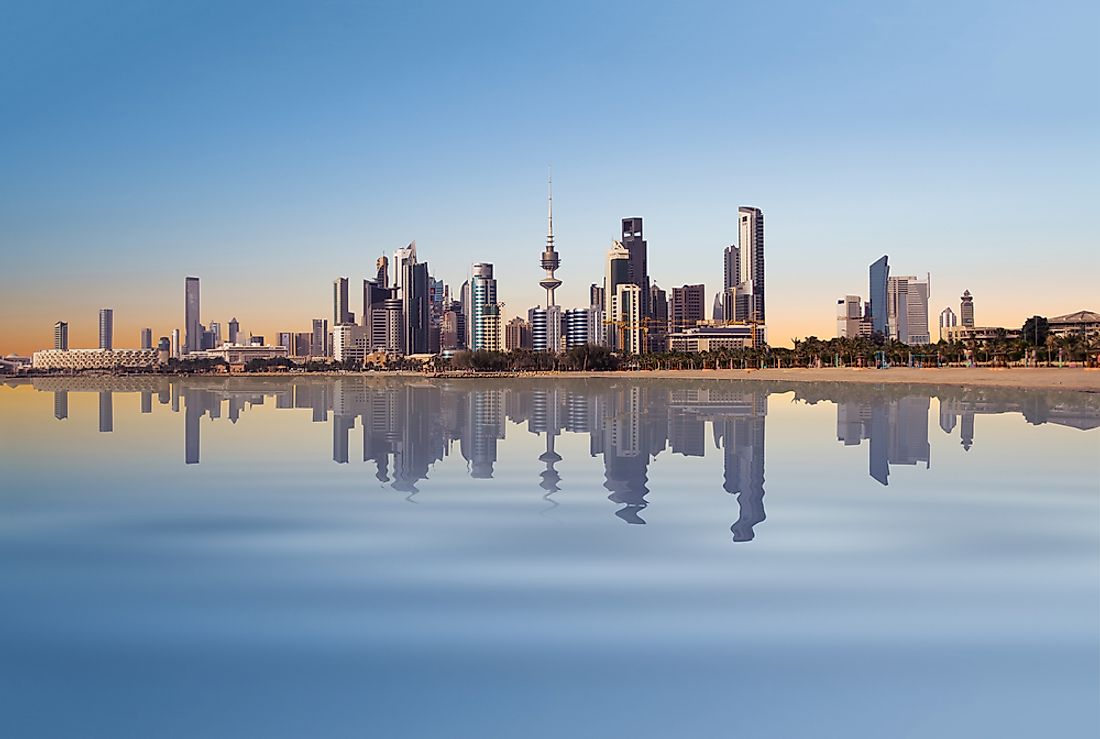
Humans are social animals. They are brazen adventurers willing to go to any length to seek out the resources necessary to not just survive, but thrive. On the other hand, they can also be lazy and unimaginative, contented with little effort and the creature comforts of civilization. These opposing facts, taken together, can't sufficiently explain why the following metropolises exist.
These are cities in areas of the Earth where humankind clearly was not meant to be. Some are quite successful - heralded as exemplar world cities both as destinations and as places to live. In others, residents and visitors still constantly face the threat of death by dehydration, isolation, or exposure
These are the cities in the world’s most inhospitable locales:
Yakutsk, Russia – World’s Coldest City
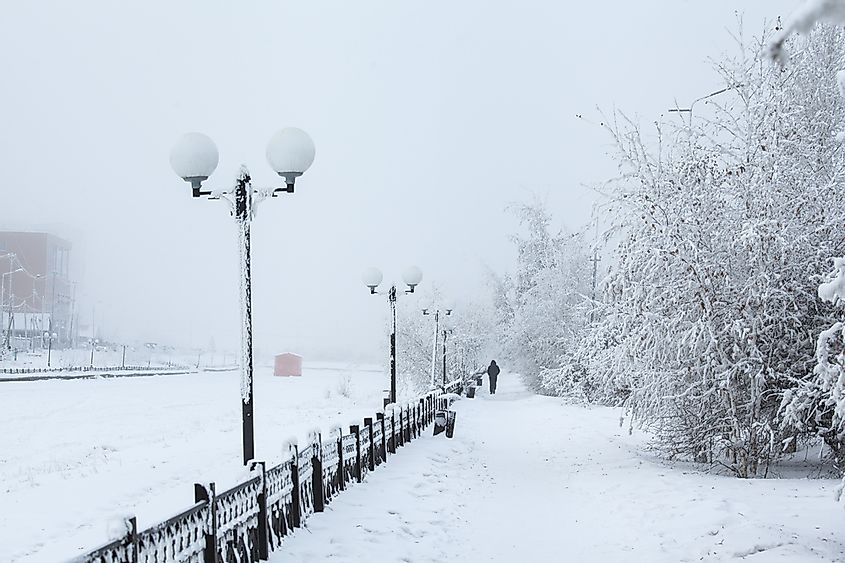
Yakutsk, located in Russia’s Sakha Republic, has a yearly mean temperature of -8.8º C. That number is deceiving as summer in Yakutsk brings several relatively warm months during which life thaws (though the ground doesn’t – Yakutsk is also the largest city built on permafrost) and temperatures can exceed 30º C. This means that during Yakutsk’s long winter the thermometer often dips below -40º C (the mean lows in December and January are -40.4º C, and -41.5º C respectively), with the coldest temperature ever recorded being -64.4º C.
In the winter months, the 269,000 people in Yakutsk (understandably) spend as little time outside as is possible. When they do venture outside, it is not without plenty of insulated clothing. When they need to use a vehicle in the extreme cold, they will keep it running all day to prevent the battery from dying, making steering wheel locks a must. Vehicle exhaust, in addition to factory smogand even the breath of residents creates an ethereal haze that cloaks the city throughout the season.
Kuwait City, Kuwait – World’s Hottest City
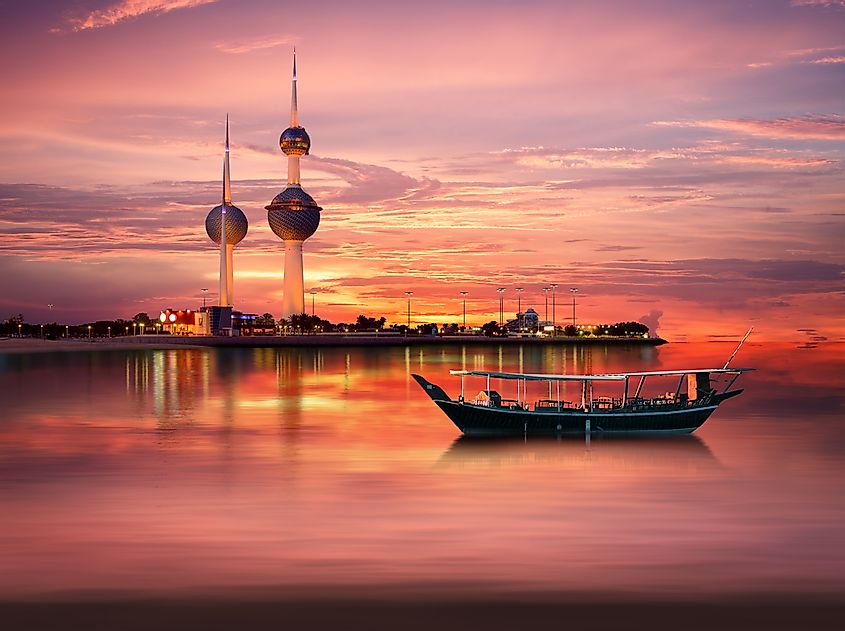
Kuwait City has a metropolitan population of 2.4 million residents who can somehow stand the blistering heat and sandstorms that plague this middle-eastern capital city each year. The city has an annual mean high temperature of 34.3º C, with the months of June, July and August averaging highs between 45-47º C. In 2012, nearby Sulaibya set the record for the highest temperature ever recorded in Asia at 53.8º C (128.8º F).
Kuwaitis beat the heat during the summertime by going to the beach, visiting "Aqua Park" (the largest water park in the Persian Gulf region", or hanging out at "The Avenues", the largest shopping mall in Kuwait, where you’ll find western chains such as Dolce & Gabbana, Fat Burger, Footlocker, and Texas Roadhouse.
Unrelenting heat of thi degree can be deadly. The government imposes an outdoor work ban June through August from 11am to 4pm. However, the ban is rarely enforced for foreign workers who make up nearly a third of Kuwait’s population. Kuwait has also been criticized for systemic abuse of foreign domestic workers, who have reportedly been forced into slavery. Because of this, countries like Indonesia, Nepal, and Sierra Leone have banned its citizens from conducting domestic work in the middle eastern nation.
Aswan, Egypt – World’s Driest City
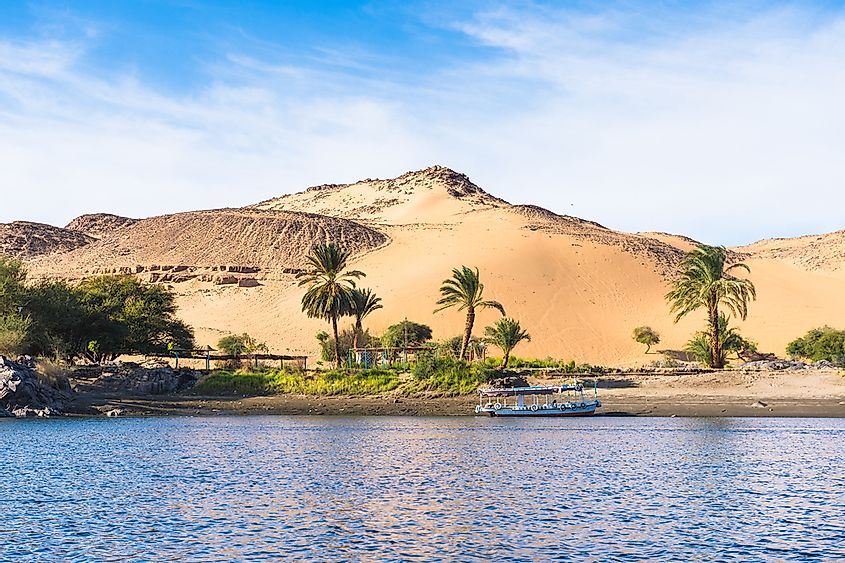
Wandering the streets of Aswan, you may come across cafes filled with men smoking Shisha (Middle Eastern water pipe) and playing backgammon, vendors at the open markets mouth-feeding pigeons (to be cooked and prepared in the Egyptian delicacy ‘hammam mahshi’), or even a modern art sculpture park in the middle of a granite quarry, but you are not likely to encounter rain.
Aswan is the world’s driest city with less than a millimeter of rainfall annually. Despite a dearth of precipitation, there is access to water. Aswan is located on the Nile and just south of the city lies the world’s largest rock-filled dam (High Dam, or commonly referred to as the Aswan Dam) which creates one of the world’s largest manmade bodies of water, Lake Nasser.
The city's name reeks of irony, as "Aswan" is an old Nubian word which roughly translates "too much water". This isn't intentionally funny, it was named due to the flood cycle of the Nile River
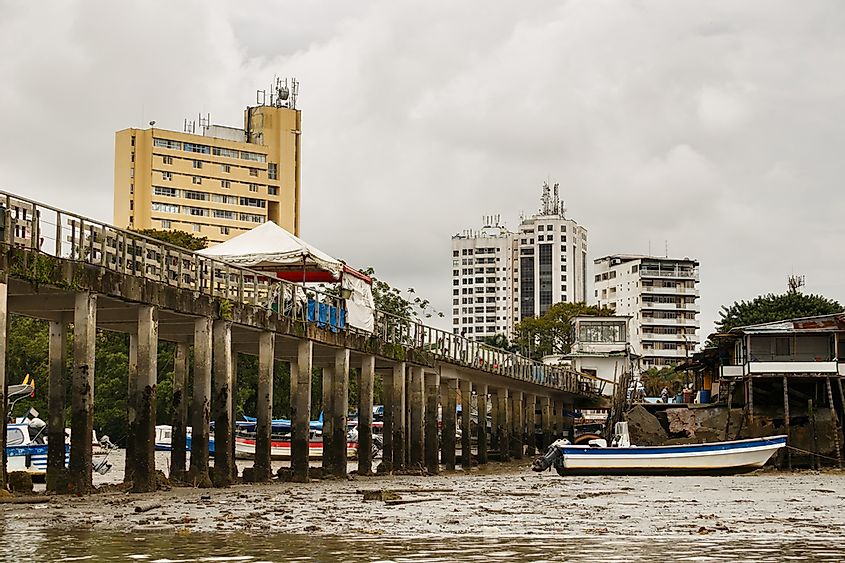
More than twenty feet of rain (6,275.6 mm) falls annually on Colombia’s largest port city of Buenaventura. Many neighborhoods on the waterfront of Golfo Tortugas (Turtle Gulf) are primarily comprised of shacks built on stilts. Buildings located away from the bay, around the city’s undulating hills, are an array of weather worn concrete, corrugated steel roofs and awnings, and the occasional crumbling wooden façade, rotted through due to non-stop rain and consistent moisture in the air.
Violence, like rain has become a way of life in Buenaventura. As Colombia’s largest port city it is one of South America’s largest hubs for drug trafficking. Former opposing sides of the Colombian civil war (the longest ongoing conflict in the Western Hemisphere) are utilizing the tools of their former trade – drug contacts, arms smuggling, kidnapping, torture, murder – in a different conflict; one between street gangs over territory in Buenaventura.
There are three major street gangs in the city: the Urabeños, La Empresa, and the Gaitanistas, all vying for control of the city, with Mexico’s Sinaloa Cartel reportedly behind a recent string of murders there as well. The government has attempted a response - armed soldiers patrol the street in some poor neighborhoods. In March of last year, after the release of a report by Human Rights Watch publicizing the everyday horrors occurring in Buenaventura, a government crackdown closed a dozen ‘chop houses’ – buildings where gangs took victims for torture and dismemberment. Yet violence persists - according to a report issued by Human Rights Watch last month, in the year since the federal intervention more than 13,000 residents have been forced to flee their homes due to violence, dismemberments have continued, and disappearances are at the same level they were a year ago.
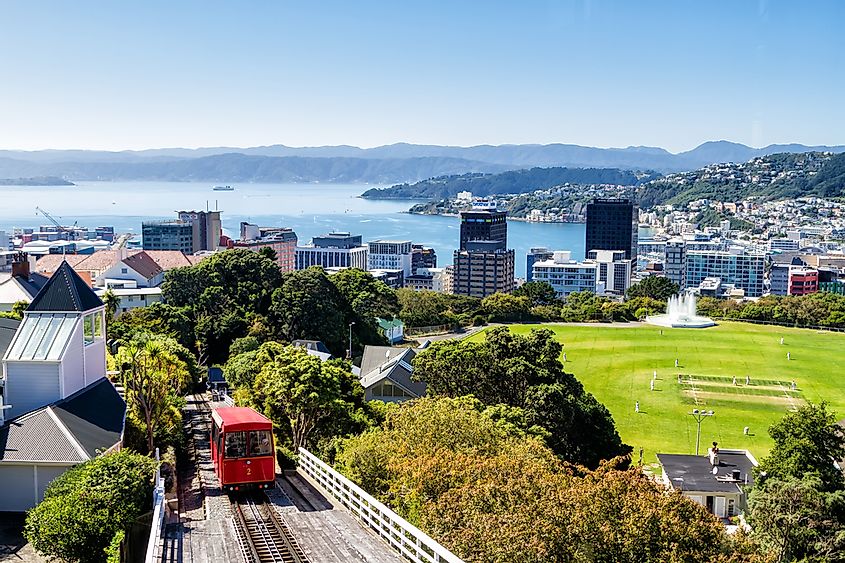
At 29km/h, "Windy Wellington" has average wind-speeds 11km/h higher than America’s better known "Windy City", Chicago. Wellington is located in the "Roaring Forties" or the "River of Wind", a meteorological phenomenon which occurs between 40 and 50 latitudes in the Southern Hemisphere. Here, hot air from the Equator meets the polar vortex with the only land masses present to break the gusts being the southern tip of South America, and, Wellington (as well as the rest of New Zealand’s South Island).
If you bring a wind-breaker, Wellington has a lot to offer (recently named by Lonely Planet as one of the top five cities in the world to visit) – this capital city is home to the "Beehive", the location of the Prime Minister’s office and parliament, New Zealand’s National Museum (Te Papa Tongarewa), the Royal New Zealand Ballet and the musical comedy duo "Flight of the Conchords".
El Alto, Bolivia – World’s Highest City (Altitude)
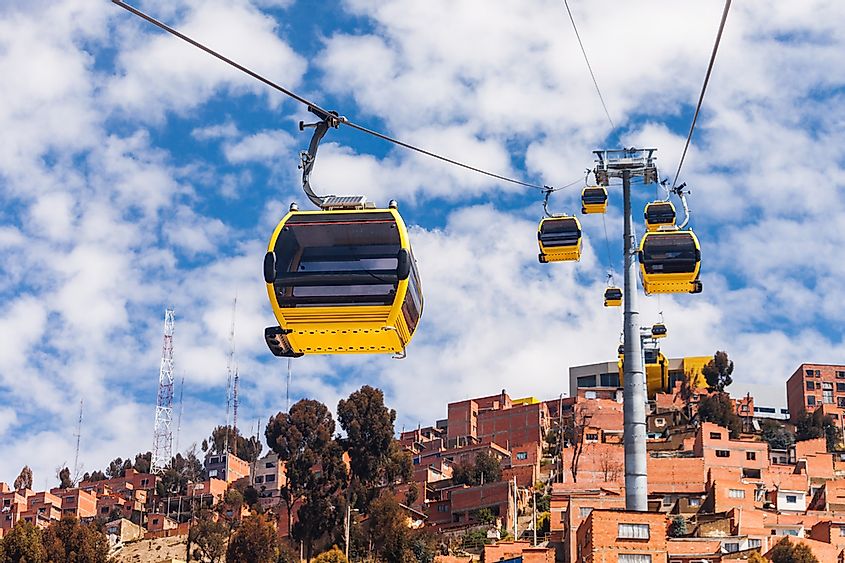
Located 4,150 meters (more than 2 ½ miles) above sea level, the city of El Alto is located in the Altiplano plains region of Bolivia. It started out in the early 20th century as an inconveniently located slum of Bolivia’s administrative capital La Paz, located in the valley below. It has since surpassed La Paz in size and population, and is now the second largest and fastest growing city in Bolivia with 1.18 million residents. Last year the world’s largest urban cable car began operation between El Alto and La Paz, offering commuters a faster alternative to the hour-long, 5 km drive down the treacherous canyon slope.
El Alto is the largest Amerindian city in Latin America with 76% of residents of Aymara ethnicity, 9% Quechua, and 15% Mestizo. It has recently been the source of political unrest, with protests organized in the city cutting off the main highway into La Paz. These protests ended up forcing President Gonzalo Sánchez de Lozada out of office and into exile. It has also served as a base of support for current President Evo Morales, the 1st indigenous president of any South American country.
Perth, Australia – World’s Most Isolated City
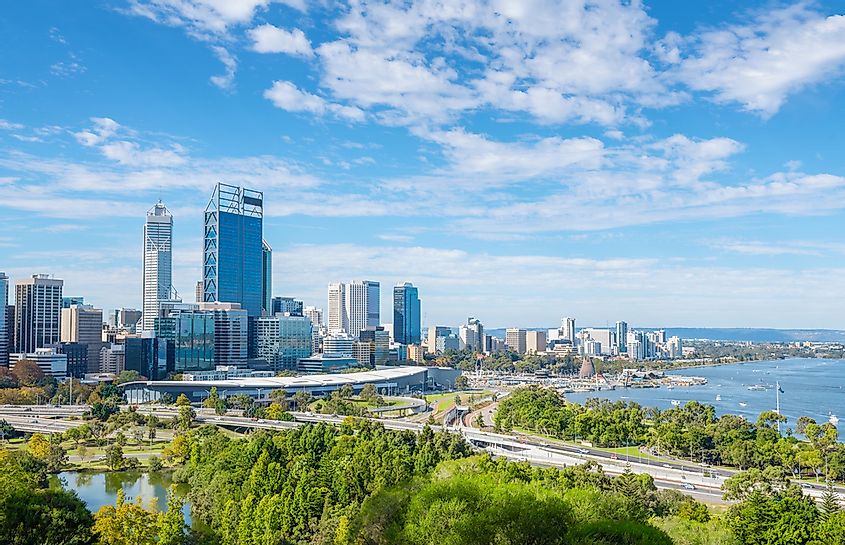
To drive from Perth to the next (relatively) large city in Australia, you would need to make a two day trek through desert climate, along one of the most desolate stretches of road in the world across the Nullarbor (no tree) Plains to Adelaide, South Australia. It is such a feat that there are bumper stickers which commemorate the accomplishment.
In the face of such isolation you may expect for Perth to be a culturally-starved backwater. Depending on who you ask, they might agree. However Perth hosts a number of international art, comedy, and music festivals, as well as being the city where both Hugh Jackman and Heath Ledger began their acting careers. Is was home to AC/DC front-man (the late) Bon Scott, and American recording artists Pavement and Bon Iver have both recorded songs about Perth.
Whatever you make of the cultural scene in Perth, it is hard to argue its prosperity despite being so far removed from the rest of the world. It is home to the headquarters of the world’s largest diamond mine, boasts a 4.3% unemployment rate, and is routinely named one the best cities in the world to live in.
Iquitos, Peru – World’s Least Accessible City
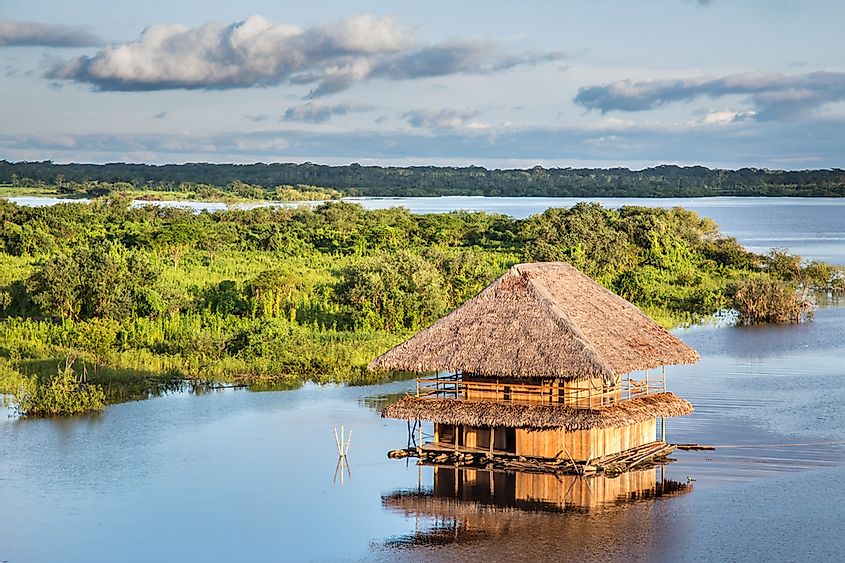
The only way to get to the Peruvian ‘Capital of the Amazon’ is by boat or plane. Small ships can reach the city from the Atlantic Ocean, some 3,600 km of travel up the Amazon River, or short flights from Lima, Peru, or Panama City, Panama service the city most days of the week. The city is so remote, very few cars have been transported here, so the city relies on busses, and smaller, motorized rickshaws for transportation. Home to half a million people, Iquitos boasts the bizarre and the divine. If you’re one of the few who gain access to the remote jungle berg, at an Iquitos market you can buy snake oil and live spider monkeys.











